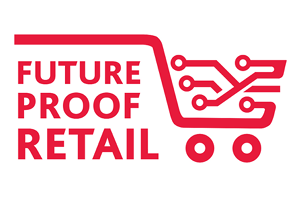Gamification in Retail

Adventures, Badges, and VR — Oh My! How Retail Will Approach Gamification
Picture this: In the year 2039, your idea of a good time no longer consists of spending hours on the couch with your PlayStation 10. In fact, your new favorite game likely isn’t on your TV at all. Now, you start your day by powering up your Virtual Reality (VR) headset and logging onto your favorite footwear brand’s interface, completing the daily games, and earning rewards along the way. By fulfilling the challenges, you’re one step closer to amassing enough points for the pair of shoes you’ve been eyeing. But these aren’t just any sneakers — this pair is exclusive to the footwear company’s digital universe until you reach a certain threshold. Each time you earn points and advance to a new level, an additional unique badge populates on the shoe’s digital prototype, enticing you to just keep playing. Like the games you play from your other favorite brands, once you beat the VR game, you unlock the option to use your rewards to purchase a unique, physical version of the digital shoes.
At a high level, gamification is currently defined as the strategic application of game design elements and principles, like points and competitions, in non-game contexts, such as retail environments or digital platforms.

While the concept of buying or earning digital products exclusive to a game is not new — such as popular online games where users can purchase ‘skins’ — widespread adoption is still taking shape across the retail industry. Will the industry really reach a point where digital purchases can translate to physical, tangible products? Absolutely. The ability and technology for retailers to do this is already there. There’s even potential for VR and Augmented Reality (AR) shoppers to someday touch, smell, and taste products digitally.
But adoption for gamification at this level will take time. Eventually, gamification can fully transform shopping into an interactive and/or virtual adventure. For now, retailers unsure about VR may consider experimenting with more accessible ways of gaming. Today, this may take the form of customer incentive programs, interactive quizzes with product recommendations, creative loyalty programs, and in-app shopping challenges or missions with rewards and badges. But the battle has just begun– expect even more innovations in the future.
Many retailers will find that incorporating game-like elements into their online stores and digital interfaces creates a more rewarding experience, giving consumers a sense of competition and achievement. One sneaker retailer already takes an incentives-based approach and encourages its app users to record their physical activity progress, granting active members early access to products, events, and customized workouts.
While some retailers have already begun to gamify their offerings, retailers of the future will see that incentivizing digital engagement is about more than flexing their tech muscles. Gamification centers around capturing the attention — and wallet share — of prominent emerging generations.
Want to level up your customer loyalty game? Listen to our 60-second Retail Podcast episode on Building an Effective Customer Loyalty Program.
From Reverie to Reality: Capturing the Discretionary Dollars of Young Generations
Building loyalty with Gen Z and Gen Alpha customers means meeting current demand for increasingly digital experiences. The number of teenagers aged 12 to 15 buying online increased 20% between 2021 and 2023, according to GWI. Additionally, research from McCrindle discovered that Gen Alpha’s spending power is expected to reach $5.46 trillion in five years. To score big with these generations’ discretionary dollars, retailers wanting to future-proof their business must cater to these audiences’ interests.
By gamifying the shopping experience, retailers can allow membership rewards to translate to discounts, for example. When they enable a lower price through point redemption, the customer is enticed to make the purchase — after all, they earned it. As customers spend more time engaging with a brand’s games and earning rewards, brand loyalty is reinforced keeping the brand top of mind. One major cosmetics brand’s gamification efforts resulted in a 76% year-over-year increase in average monthly engagement, according to Chain Store Age. After shuttering its stores, the beauty brand revamped its customer incentive program with badging and scavenger hunts. By incorporating these immersive elements, brands encourage customers to engage more deeply, which in turn, lowers the price of their favorite products and increases the likelihood of repeat purchases.
Gamification continues to draw buyers in by evoking motivation and satisfaction — a phenomenon that has not historically been seen with shopping. And as gamification evolves and more brands integrate interactive elements into the shopping experience, retailers can expect to see mutual loyalty: customers will decide which brands’ games benefit them the most, and brands can continuously reward their most active gamers.
The evolution of technology will empower brands to create increasingly immersive and personalized experiences. As time progresses, customers will expect the brands they’re shopping to offer achievement-driven rewards, a step above today’s in-app, retail loyalty programs, like AR shopping scavenger hunts or live VR, multi-player challenge events. For retailers eager to join the quest, this will undoubtedly mean investment in today’s advanced technologies to prepare for tomorrow’s customers.
Start A Winning Streak with These Steps
Retailers hoping to press start on gamification elements should first identify their goals.
Examples of objectives may include increased sales, higher customer engagement, and stronger brand loyalty. From there, retailers should determine the most appropriate formats to meet those goals. Will the efforts take place within a pre-built app, or will they start from square one by building a new app, interface, or even a VR storefront? For one beauty retailer, the company’s “Swipe It, Shop It” campaign was an early example of a small-scale integration of a game within a mobile app. “Swipe It, Shop It” presented shoppers with one product at a time, prompting buyers to either swipe left if they weren’t interested, or swipe right to learn more.

Once retailers determine where they will incorporate gamification and the format it will take, they should identify the components they want to prioritize and confirm what software is needed to bring their games to life. In most cases, retailers will need to incorporate new technology or custom build software to deploy point systems, badges, and interactive digital displays.
When a retailer is rebranding, upgrading, or launching a mobile app, various factors must be considered, including user interface (UI) and user experience (UX) design, back-end implementation, maintenance, and data security. To enable a more seamless integration process, retailers should account for the following engineering or software components:
- Loyalty program software enables retailers to create, maintain, and analyze loyal customers and take actions – such as rewarding them with points or discounts – based on their shopping activity. The software integrates with e-commerce platforms and point of sale (POS) systems to ensure customer data, like purchase history, is synced in real time across channels.
- Application Programming Interfaces (APIs) allow retailers to gather information from a variety of sources, which can be consolidated to provide detailed reporting that supports cross-platform initiatives like loyalty programs, and customer relationship management (CRM) systems to give retailers visibility into customer trends. This level of data analysis can assist retailers when trying to personalize CX, as well.
- UI and user design tech, which both ensure all gamification elements are seamlessly integrated into the overall UX, both online and in-store.
- Options to add gamified extensions to commonly used eCommerce applications are becoming increasingly available but are still in their infancy. As gamified extensions become more accessible, they will enable retailers to offer gamified experiences faster. For now, gamified extensions mostly serve as a sandbox for retailers to experiment and see what innovations are possible for their shopping experience. However, for retailers who are ready to commit and integrate these extensions, they will find app customization with the extension is needed before a larger launch.
Early adopters who leverage gamification and thoughtfully assess the associated software needed to establish a strong technological foundation will likely realize a competitive edge. Once the technical groundwork is laid, retailers will also find they are able to explore future gaming ideas more efficiently. However, bridging the gap from idea to execution requires help.
Retailers should consider working with a third-party advisory firm that can offer the industry and technical knowledge, as well as application customization capabilities, needed to effectively future-proof their business.
How BDO Helps Retailers Level Up Their Apps
The gamification playing field has only reached level one, and if you have yet to integrate gaming elements into your selling strategies, don’t worry — the shot clock has not hit zero yet. By understanding what would appeal to your unique customer base and familiarizing yourself with the complex components required to execute a gamified shopping experience, you too, can future proof your retail business.
BDO Digital professionals can help with custom app development that allows your brand to stand out among the competition, whether you want to build a quick-to-market project or a transformational system running the core of your business. From proposal to launch, BDO Digital helps manage the mobile app development process — and the gaming dimension that comes with it. Our offerings cover everything from UX and UI design to back-end data organization and loyalty program integration. Additionally, our ability to implement and elevate off-the-shelf gamified extensions tailored to your organization’s needs enables the best outcome for your customers.
Unearth how BDO helped an eCommerce organization innovate its user experience in our case study, Revamping Ecommerce: Enhancing Security and User Experience for Future Growth.
Ready your organization to be crowned the champion.
BDO’s Retail and Consumer Products professionals are available to offer deep industry expertise around leveraging the power of technology and custom application development to reimagine the customer experience.